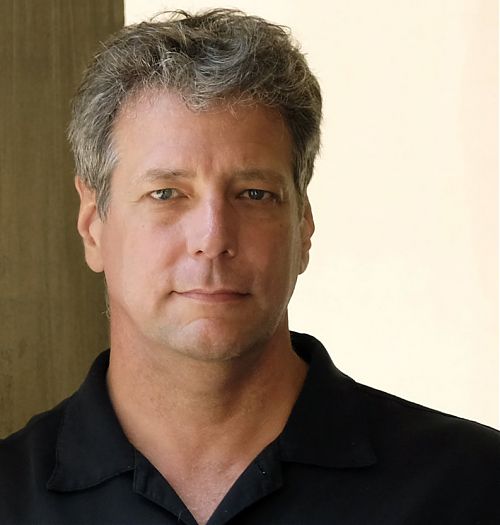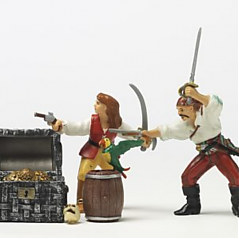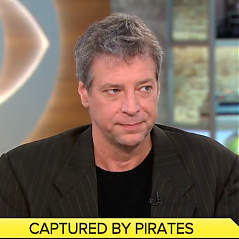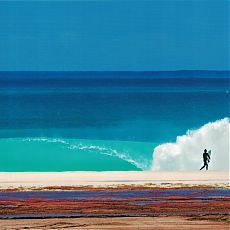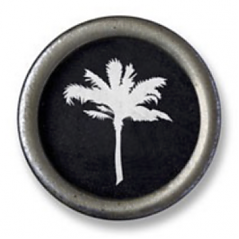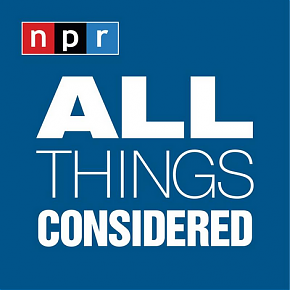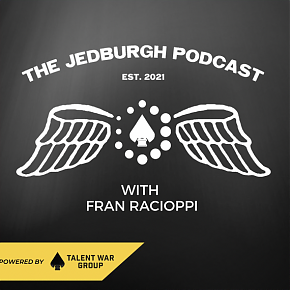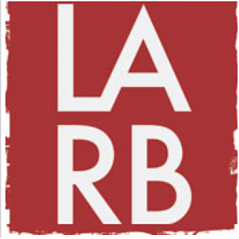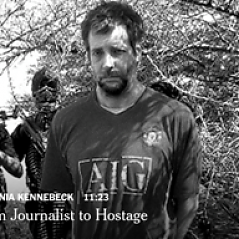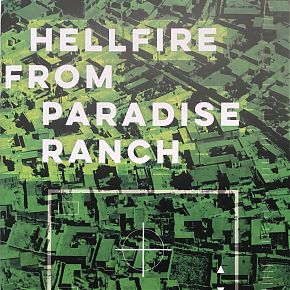Rafts of the Medusa
Why every day on the Mediterranean is a new scandal for Europe
July 2023
Oder lesen Sie das auf Deutsch
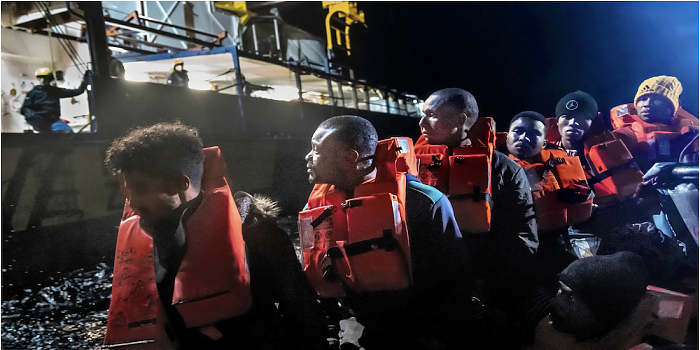
Fotos von Maria Giulia Trombini
THE FIRST BOAT WE FOUND was just a shell of aluminum, tilting on the dusk-blue water like a ghost skiff. We mustered in overalls and life vests at sundown to save whoever it was; but the captain called off the job and we watched the boat float past in a pair of spotlight beams from the bridge. “It has no engine,” said Viviana, a sweet-tempered Sicilian with several years of experience in civilian sea rescue. (As a matter of the policy, crew members requested not to have their last names cited.) Near Libya it was normal to see boats without engines, she said, because the Libyan Coast Guard poached them to reuse. The habit made no sense until you learned about rescue politics on the Mediterranean.
“It is also not marked,” she said. When charities rescue a boat full of people drifting north from Libya or Tunisia, they mark it with spray paint as a form of record-keeping. The Libyans don’t. “So we think this was an interception by the so-called Libyan Coast Guard.”
Our ship, the Humanity 1, belonged to SOS Humanity, an independent nongovernmental organization based in Berlin. I was onboard as a journalist. I had written about trafficking routes before, but when I sailed with the German navy in 2016, the rescuers would sabotage the smugglers’ boats. I remember a rubber raft burning on the water like a patch of oil: The Germans had wanted to deny the Libyan gangs a chance to reuse the equipment.
“Why would the Coast Guard take engines?” I asked our captain, Josh, when I had a chance. “Why don’t they just destroy the smugglers’ equipment?”
Josh smiled. He was a burly, tattooed German with dark hair who wore O-rings in his earlobes and looked, sometimes, like a pirate. He played German punk music on the bridge and insisted on being called Yosh by the crew. But he ran a disciplined ship.
“That’s why we have to say ‘so-called’ Libyan Coast Guard,” he told me in a thick accent. “Basically, the persons that are going out as the ‘Coast Guard’ are either directly in cooperation with the persons that put these boats on the water, or have contacts to these persons through the black market. So they sometimes want to reuse these cheap wooden or rubber boats—and of course the engines. Most of the engines are brand new.”
“Interesting.”
“Yeah, it’s a business,” Josh said.
§
THE SECOND BOAT we found was fiberglass, and someone had set it on fire.
The morning started with two Libyan ships in the distance, moving fast to the south, and we thought they were showing dominance from inside the 24-mile Libyan patrol zone, since we stood just beyond it. But by 9 a.m., a brown plume of smoke was drifting from the horizon.
I went up to see Welly, the ship’s doctor (as well as my bunkmate), who had a watch shift on the top deck. He wore binoculars and a heavy jacket against the wind. “The smoke’s been scattered, so it just looks like cloud,” he said, pointing at the plume. “But that’s a burning boat.”
“Who burned it?” I said.
“No clue.”
A spotter plane called Seabird flew straight over our heads to inspect the fire.
It was mid-April, and the warm season had started. April 2023 was setting year-to-date records for migration going back to 2017. There were four times as many people on the water as there were in April of 2022. One reason for the numbers was racism in Tunisia: President Kais Saied had given a nasty speech about sub-Saharan Africans in March, full of paranoia, and a wave of racial violence had encouraged migrant workers to try their luck on unstable rafts.
Numbers dipped in May because of rough weather but rose again when it cleared, and earlier this month a large, unsteady fishing trawler from Tobruk, in eastern Libya, foundered off Greece with up to 750 migrants onboard (from Syria, Egypt, Palestine, and Pakistan). At least 78 people are confirmed dead, but hundreds are still missing. Many of them were women and children stuffed in the bottom hold. It was the deadliest sea accident in Greek waters since 2015, and blame for it lies with the smugglers who sent out the boat. There will be an inquiry into the Greek Coast Guard’s measure of responsibility, but the more serious question is why these boats are on the water at all. Seven years after the EU forged a plan to stifle human smuggling by funding the so-called Libyan Coast Guard, the Mediterranean is still a watery grave.
The fiberglass boat we spotted was near western Libya. Later in the morning, Seabird reported a group of refugees on the deck of a vessel we had seen—called, in fact, the Zawiyah. So we had witnessed a Coast Guard interception. The Libyans must have sped over to the boat to collect the refugees before it left their patrol zone. They also probably nabbed the motor and lit the boat on fire. It drifted out to international waters, and when we neared it, we noticed an evil smell of burning fiberglass. The hull had melted. In fact, only a few structural ribs remained intact, so it bobbed like a weird toy on the water.
There’s a clear and baffling sense of competition between European NGO ships and the Libyan Coast Guard, and the Libyans’ aggression can be explained in part by their lucrative contract with Europe. No amount of EU money explains their strange behavior beyond the 24-mile zone, however. When an NGO ship called the Ocean Viking tried to rescue a rubber boat full of refugees in March, 37 miles off Libya, a Coast Guard vessel approached “dangerously,” according to a statement from humanitarian organization SOS Mediterranee, and fired warning shots at the NGO workers—in international waters. They backed off, and dozens of refugees were returned to Libyan camps.
A pilot for Seabird, Felix Weiss, told me about another bizarre interception last September. The Libyans captured a boat of migrants inside Malta’s search and rescue zone, and Weiss watched Libyan Coast Guard agents climb into the smuggling boat and run it around it in circles. “They did donuts with the empty boat,” said Weiss. “We thought, ‘OK, maybe [they] are just completely crazy and just having fun. So we left the scene.
“But two days later, we found the same boat. It was a blue wooden boat with Arabic [lettering] and specific numbers written on it.” A new load of refugees were crossing on it to Lampedusa, Italy’s southernmost island. “So the Libyan Coast Guard, for sure, towed this boat back to Libya. Then the boat got into the hands of smugglers [to be] reused for that migration route,” Weiss said. “I mean—of course, maybe the Coast Guard just dumped the boat, and smugglers took it from the scrap yard or whatever. But let’s be honest. It’s really clear to me that there was quite heavy communication between the Coast Guard and the smugglers.”
By doing donuts in the water, “they were testing the engines,” he believes. “When they find a boat which is valid to reuse, they’re going to test it and bring it back to Libya.”
The Libyans’ behavior is a source of grim humor among NGO workers. Later that week, a Coast Guard vessel came speeding up on our starboard side from the Libyan zone in the south, with its watchmen aiming binoculars at the paint job on our hull (“SOS Humanity,” in bright yellow and blue). When we tuned in to their radio frequency, on the bridge, our Arabic translator laughed. “They are saying, ‘It is the organization of our enemy!’” he said.
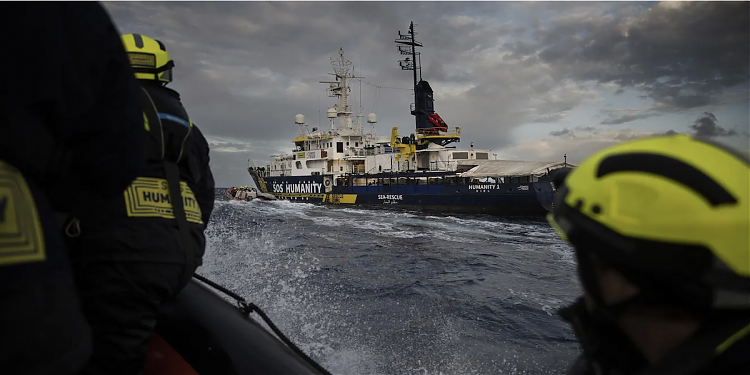
§
BETWEEN 2012 and 2014, I spent 32 months as a hostage of Somali pirates. I’m European as well as American—a German passport holder who lived for more than a decade in Berlin, and when I returned from Somalia, the mass migration of refugees from Afghanistan, Syria, and elsewhere that marked Chancellor Angela Merkel’s long term in office was just getting underway. It was clear to me, at least, that the pirate business model was not very far from a human smuggler’s. A teenage Somali refugee told the Independent in 2016 that guards in a Sudanese detention camp had fed him nothing but biscuits and mango juice on his way across East Africa, and alarm bells went off in my head, because pirates had fed me the same sweet junk as a hostage.
I went on to write a feature for Businessweek on a Somali pirate financier who had become a top boss in the human-smuggling business through Sudan. The similarities were easy to see, if you knew where to look (and if you were not distracted by the popular, misleading tale that pirates were just frustrated fishermen). Somali pirates and African desert smugglers were organized criminals who needed certain basics—Kalashnikovs, SUVs, a cheap supply of food—and the profits in either case could be staggering.
But stories from the camps in Libya are worse than anything I saw or suffered in Somalia. Refugees spend months, even years, in packed warehouses without even foam mattresses or blankets, driven to fistfights for showers and drinking water. The trafficking routes through North Africa trace old slave routes, according to Jason Pack, the author of Libya and the Global Enduring Disorder—and stories of migrants forced to work as slaves in Libya are common. A CNN team filmed a slave market in 2017, jerky footage of twelve migrants from Niger auctioned in a nighttime Libyan yard. “Big strong boys for farm work,” offers a smuggler in Arabic. Women have to clean houses or work as prostitutes; men work on farms or construction sites. These stories match what I heard in Sicily when I reported my own piece.
“The Coast Guard has always worked with the Italians to deter migrants. Some of them take money to [help] smuggle the migrants, and then take money to push them back.”
Each ride on a shoddy boat toward Europe may cost hundreds or even thousands of dollars, and the price is separate from the cost of travel overland through Africa. For distant families on the receiving end of panicked phone calls from unknown parts of the world, these prices amount to ransoms to free their relatives from the stinking, inhuman detention camps.
Meanwhile, Italy and the European Union shovel tens of millions of euros at the Libyan Coast Guard, which even in its most buffed-up description is a patchwork fleet of old Italian vessels crewed by Kalashnikov-brandishing men with a glancing relationship to one of the warring militias on shore. It is not a normal agency. The ships we saw from the Humanity 1 behaved not just as enforcers of EU policy but as a long arm of traffickers on land. “The Coast Guard has always worked with the Italians to deter migrants,” Pack told me. “Some of them take money to [help] smuggle the migrants, and then take money to push them back.” The trafficking business on the Mediterranean, in other words, is like a washing machine, churning people out and back for profit.
But the angle taken by most Western journalists is that the European Union simply outsources its so-called dirty work to the Libyan Coast Guard, meaning that the EU pays the Libyans to ensure migrant boats never travel as far as the central Mediterranean, where they become boats in distress to be rescued by ships like the Humanity 1. This much is true, but it leaves the lazy impression that Libyan interceptions can reduce human trafficking. Most people hear it and avert their eyes, because until a dozen years ago, the EU outsourced its dirty work to former Libyan leader Muammar al-Qaddafi , who leveraged a bog-standard racist fear of immigrants in Europe to negotiate profitable aid packages for himself. He did suppress the smugglers, at least before he was overthrown during the Arab Spring by NATO air raids and his own people.
So in 2017, when Italy and the European Union announced massive aid packages for a vigorous Libyan coast guard, it sounded like an imperfect solution to the European public, like the imperfect solutions to migration tensions everywhere. The United States outsources some of its dirty work to officials on the southern border of Mexico, for example. To suggest that the border-enforcement policies of any massive nation—the United States, Russia, Turkey, China—are in some degree racist, corrupt, or insensitive to the needs of the powerless is like saying rocks are hard. This is not to justify the racism, or the policies. But it softens the story in Libya, which unfolds on a lower circle of hell.
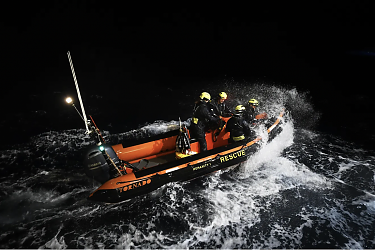
§
CAPTAIN JOSH aimed for the third boat one calm afternoon in late April. It vanished from the radar within an hour, so we set out on fast boats—rigid hulled inflatables, or RHIBs. My pilot, Olive, was a seemingly shy young Bavarian who used to work for Greenpeace, a quiet and quirky presence on the ship; but behind a RHIB throttle, she could be a demon.
We sped in one direction after another, but the ocean was like a blue desert, windy and barren. Olive hopped us over the mild waves, but there was no sign of a boat, intact or otherwise.
After three hours we gave up, but just riding in a fast boat is hard work. By evening, both RHIB teams were tired, and after dinner some of us felt seasick because the swell had picked up. Captain Josh announced around 9 p.m. that he’d been alerted to a new distress case, and he expected to reach the refugees in about two hours. “Please get some rest until then,” he said.
This was bad news. Night rescues, large-swell rescues, or “chaotic” rescues were considered dangerous. It also went against my instincts as a surfer to rush into rough, rising swells after nightfall. And I was tired, so I hoped the case would fizzle, like the one before it. I dozed for two hours, and Viviana woke us up around 11 p.m.
“We have to suit up—let’s go,” she said.
We waited in life vests and helmets on the main deck for cranes to lower the RHIBs. Black waves off the port side were spitting. The bridge had two searchlights reaching across the water, and when I climbed into the bouncing boat, I could have sworn Josh radioed, “Follow the port-side light,” but Olive sped like a banshee toward the right-hand beam. That was one of several confusions. (Olive knew what she was doing; in the bouncing darkness all I could do was hang on.)
The lead RHIB found the refugees first. We arrived after 20 minutes and heard a chorus of men’s voices, shouting like football fans. Viviana’s thin voice hollered over them—“No! Stop! Don’t fight!”—and then we saw the raft, a rubber carpet under 30 feet long, overcrowded with Africans, swaying treacherously on two-meter swells. We circled and watched the lead RHIB approach, then disengage, back and forth, while the team threw life jackets. Whenever we moved downwind of the raft, there was a human stink and the smell of fuel.
“The waves were punching a lot, and this can be really dangerous,” Viviana said later. “The survivors started to fight at some point because our boat, it became a kind of escape route, and everybody wanted to reach the safe place at once. I think it’s like a survival instinct.”
Soon each human shape on the raft seemed to wear a blocky orange vest: we saw reflective patches lined up in the dark. Viviana’s RHIB took people aboard, one at a time, and only when 10 or 12 had made the tricky step to the nose of the RHIB did the shouting and anguish begin to subside. The lead RHIB shuttled about 20 people back to the Humanity 1 while we remained, hoping no one would drop into the water.
Steffi, on our RHIB, was a buzz-cut paramedic driver from a small German town with a nose ring and a tendency to overthink, to say too much. Steffi was short for Stefan, and it was his job to calm down the raft.
“Hello, do you speak English?” he shouted, and I felt a qualm of fear.
“YES,” came the chorus from the raft.
“We are here to help you!”
“OK,” answered the men.
“We will stay here until the other speedboat comes back,” Steffi explained, “and then more of you will be rescued.”
“OK!” said all the men.
“Our boat is only here for emergencies. So please sit down and be calm. The rescue will continue soon.”
“OK.”
A few people sat down. It was incredible. Steffi’s skills as a paramedic had calmed the boat.
The lead RHIB returned, loaded 20 more people, and before it sped back to the ship we made an approach. The fear on the raft was like the wind or the spraying waves—another element—and people tripped, or jumped, stiff and confused, across the terrifying gap. Steffi and another German called Inga helped them; I had to organize them around the back of the boat and tell them where to hold on.
“Where are you from?” I asked.
“Sudan,” said one man. “You know Sudan?”
“Yes.”
By then I felt proud of our operation, and in the dark water my home in the United States felt like another planet.
“Where are you from?” said one of the Sudanese.
“Berlin,” I said.
§
THE RAFT held 69 people. Sixty-eight were men from Nigeria, Mali, Niger, Sudan, Eritrea, Ghana, Senegal, Guinea-Bissau, and Guinea. One lost consciousness in the lead RHIB and needed help in the medical bay. A number of them staggered around on the ship’s dim-lit rear deck afterwards, looking lost. But no one had dropped into the water, and no one had drowned.
The only woman was a 19-year-old Nigerian. She disappeared into the onboard women’s shelter for a couple of days, attended by our midwife, a white-haired earth mother from Vermont named Jade. She told me the young woman had spent about a year in Libya.
“She’s not saying much right now,” said Jade.
That didn’t sound good, but I chose not to think about it. Everyone, at first, was seasick. The swell had increased in the hours and days after we cleared the raft, and on the long route to Ravenna, Italy, the ship bucked like a temperamental horse. During my gray dawn deck-watch shifts, the men approached me, one after another, for paracetamol or Vomex tablets. Otherwise, they weren’t demanding.
I asked Welly, the doctor, about the paracetamol, because the men gave a dozen different, uncertain reasons for needing it. “We had a run on it the first day,” I said. “Once they heard about it, everybody wanted some paracetamol.”
“Maybe just to feel they’re getting medical treatment,” he said.
“Does it help?”
Welly smiled. “Nothing wrong with a placebo.”
We handed out blankets, hoodies, and simple snacks; we had shower-toilets onboard, as well as steaming canisters of black tea. But the men had to sleep on the wooden deck. These conditions were more comfortable than the Libyan camps but not substantially different.
“Libya,” said a weary, middle-aged Nigerian with alert, dark eyes and a white-tinged beard. “Is a bad country.”
He gave his name as Loki, or at least, that’s how most of us understood it.
“How long were you there?” I asked.
“Two years.”
“Did you have to work?”
His friend, Emmanuel, interrupted. “Me, I am a welder. They take me out so I can weld.”
“For pay?”
“No! When I ask for my pay, they show me the gun.”
Loki gazed across the deck. At last, he touched my shoulder. “In Libya,” he declared, “if you want to sleep, you sleep with one eye open.”
“What did they feed you?” I said.
“They didn’t.”
“Nothing?”
“They beat,” said Emmanuel. “They flog you.” He pointed at a hose coiled on the deck. “With a pipe, like that.”
“With a hose?”
“Yeah.”
Loki said he had escaped from the Zuwarah detention camp, but he wasn’t specific about how he had boarded the raft. Emmanuel said he’d paid 400 Libyan dinars, about $80 in the United States, for the trip. Prices fluctuate depending on the refugee, but the low rate hints at how well the smugglers regarded the raft’s chance of survival.
I turned to Loki. “How do you spell your name?”
“L-U-C-K-Y.”
I laughed. “I understand.”
The young woman called herself “Happiness.” Many of the refugees had invented names, but hers was a translation from Bini, her native language. Her mood and condition improved over the next couple of days, and Jade asked her if she wanted to talk to a journalist. Happiness met me on the main deck: large, voluble, shy at first, but quick to laugh. I was more afraid of her story than she was. A friend, she said, had offered her a job in Libya, so she made her way north on a series of crowded overland cars. “But when I first came to Libya,” she said, “this friend of mine, she did not tell me that I was going to do prostitution work. I told her that I could not do the work. So she asked me to pay 2 million dinars.”
“Two million.”
“Yes.” About $400,000. “So I tried to escape. That was when I ran into the Libyan police,” who, she said, placed her in a detention camp. “When I was inside the prison, the guards molested me, and I became pregnant.” The camp food was spiked with sleeping drugs to keep refugees docile, she believed. Because of the drugs, she had a miscarriage.
“When they see that I am not well, they decide to release me.” She lived for a while in the ghetto of Az-Zawiyah, near Tripoli. She made one attempt to cross to Europe, but the Libyan Coast Guard intercepted. “Libya arrived in a small ship, a speeding boat,” she said. “And when they come, they said they want to ram us, to burst our boat, and all of us should die. So we begged with them.” The Libyans offered to arrest them instead. Some people piled onto the Coast Guard boat; the rest were tugged on a sagging inflatable to shore.
They landed at Zuwarah. The Coast Guard transferred the refugees to “the police,” said Happiness, which “worked together” with the Coast Guard. The police demanded 1000-dinar fines for attempted illegal migration. Lenders, like bail bondsmen, were available to cover the cost, and Happiness took out a loan. But then she needed a job. Libyans could help there, too. So she found a job cleaning houses, essentially for free, to pay her debt. “I was working, working, working, until I paid the man,” she said.
In April of this year, after she’d saved up for another boat fee, the Zuwarah smugglers placed Happiness with a group of refugees in a rude seaside structure—what another refugee described as “a garage”—and waited several days until the surf had dropped. On April 20, before dawn, the smugglers ordered members of the group to carry an inflatable raft across a rocky beach. (One man cut his foot.) The smugglers provided a compass, a satellite phone, and some cans of fuel. There were vague directions to Lampedusa, which lay about 150 nautical miles to the northeast.
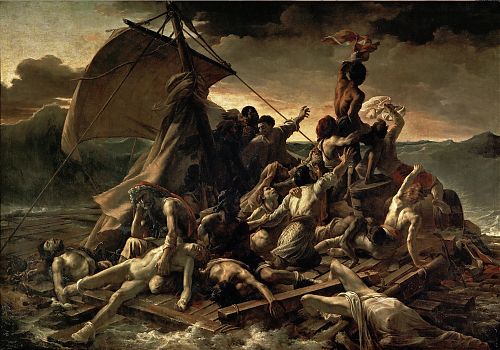
They spent nineteen hours on the water. There was a false start—“One time, we come back to land,” said Happiness—but they managed to putter about 70 miles to the northwest before running out of fuel. The swell rose after the sun went down. “When you guys saw us, our boat was leaking,” said Happiness. “There was water entering inside. The compass we were using got wet, and our satellite phone was about to die.” And when they saw the ship’s searchlight beams, they had no way of recognizing us. “We saw one light coming from the back, and one light coming from the front,” said Happiness. The light from the front was our lead RHIB, and she guessed it was not a Libyan boat when she heard Viviana’s voice.
But tempers and patience on the raft had frayed, and a general fear that the Libyans had caught them in a massive searchlight was maddening. So the RHIB, at first, meant hope: “When they saw us,” Viviana told me, “the first reaction was like shoving, everybody happy, shaking hands. But this also is very dangerous in terms of the stability of the boat.”
By the time our RHIB arrived, the scene had devolved into something more chaotic. It remained dangerous for at least an hour, and it reminded me of the famous painting by Théodore Géricault, The Raft of the Medusa, which stayed on my mind for weeks. When a French frigate called the Méduse grounded on a sandbank off West Africa in 1816, officers departed in lifeboats, but the lower classes (one woman among them) drifted on a crowded makeshift raft. There were reports of starvation and cannibalism; only 15 people survived. The Méduse story was more lurid and destitute than what happened off Zuwarah on April 20. but it became a scandal in France, and Géricault’s painting afflicted comfortable minds in Paris a few years later. My point is that the equivalent of the April 20 incident happens every day on the Mediterranean—unreported, undescribed—because Europe has not brought its immigration routes under control. And the idea that shoveling millions of euros more into the laps of the Libyan Coast Guard will somehow quell this human traffic would be a bitter joke if it were not also a crime against common sense.
§
IT TOOK FIVE DAYS to reach Ravenna. The Italian government has imposed fresh restrictions on rescue ships this year to slow the influx of migrants, and one is the deliberate assignment of distant ports. We were down near Sicily; Ravenna lies much farther north, near Venice. The policy was a product of Italian Prime Minister Giorgia Meloni’s new far-right government. SOS Humanity plans to sue, in protest, arguing that a distant-port policy disregards international law. But after years of uncontrolled migration, the Italians are so tired of bearing the weight of Europe’s patchwork migrant policies that they’ve elected a prime minister with explicitly fascist sympathies.
Is there another way manage all this?
The Mediterranean right now looks like the Gulf of Thailand in the late 1970s, when “boat people” fled postwar Vietnam. The new communist government had started collecting its enemies into labor camps after the Vietnam War; people spent hundreds or thousands of dollars to board rickety, overcrowded boats bound for Hong Kong. Former U.S. Presidents Gerald Ford and Jimmy Carter built a massive resettlement program for the region under a U.N. aegis, which allowed Southeast Asians to apply for asylum from abroad, without having to place themselves at the mercy of human smugglers. Now the United States has Vietnamese communities in Kansas, Cambodians in Southern California, Laotians in Texas, and so on.
The Mediterranean right now looks like the Gulf of Thailand in the late 1970s, when “boat people” fled postwar Vietnam.
President Biden has announced a string of “processing centers” around Latin America to accomplish something similar. Refugees near those centers can learn about the asylum process directly from U.S. officials, rather than chasing lies, rumors, and promises pumped out to social media by smuggling networks. Till Rummenhohl, the head of operations at SOS Humanity, said a lot of people pulled from the Mediterranean have no idea how good or bad their asylum chances are: he said just over 50 percent of those who land in Europe after such rescues are ordered home to their countries of origin. “So if you go through this process at home, and somebody tells you, ‘There is no chance right now,’ you might think twice about stepping foot on a boat,” Rummenhohl said. “Right now, we see a lot of educated people fleeing these countries where they would be needed. I think this [remote asylum process] would open the possibility of reconsidering.”
Rummenhohl said he would also like to see a more generous visa system in Europe, because so many nationalities in Africa aren’t eligible for simple visas. “Right now, the reality is that someone who wants to study in Europe . . . basically doesn’t have any chance to ask for a visa [from Africa],” he said, and a number of people we rescued from the raft—including a pop singer from Ghana, with professionally made videos on his Instagram page—were skilled and educated economic refugees who had simply lost their sources of income. A visa process would have been more appropriate than a dangerous underground odyssey.
The morning we landed in Ravenna was cool and gray. While the men folded their blankets and got ready to leave, one of them came to me and asked if I could “wake the lady inside,” meaning Happiness, but Happiness was already awake. In fact, all the refugees were buzzing with anticipation. They wore wool hats and hoodies to ward off the cold—none of them had experienced weather so dull as a northern Italian spring—and the massive ships moving in and out of Ravenna harbor were also something new.
Blinking police cars, an ambulance, the Red Cross, the Guardia Costiera, journalists, immigration officials, and a uniformed harbormaster: The concrete pier at Ravenna was crowded. The Red Cross came on to distribute masks and Tyvek suits. The Africans were COVID-negative, but a cough had made the rounds. Light aluminum emergency blankets were also handed out, and soon the new arrivals sat in rows, glittering in the overcast light. Italian officials with clipboards let them disembark five at a time. We said goodbye, and it was emotional, because like most groups of people confined to a ship for a while, we would never meet again in the same configuration.
We watched them file into a building for medical checkups—a moody collection of fears, ambitions, irrational dreams, hope, and impossible suffering. Jade guessed that Happiness had a strong chance of asylum. But 53 percent, statistically, would be ordered home. The washing machine kept churning, even on the shores of Europe, and the cycle helped no one but the smugglers in Libya.
§
Michael Scott Moore is a journalist and novelist, author of two nonfiction books about the ocean, including Sweetness and Blood, about surfing, and The Desert and the Sea (2018), about Somali pirates. His first novel, Too Much of Nothing, is set in the fictional town of Calaveras Beach.
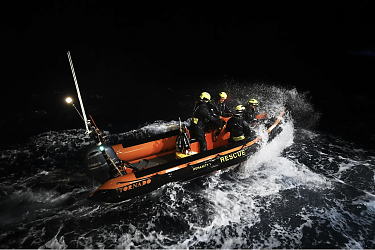
Rafts of the Medusa
Why every day on the Mediterranean is a new scandal for Europe. For both Foreign Policy and Die Zeit.
California’s Attempt at Land Reparations
How land seized from a Black family 100 years ago may be returned. The Bruce’s Beach story from a hometown angle, for The New Yorker
Day of the Oprichnik, 16 Years Later
The novelist Sorokin, the president Putin, his man Dugin, and the war in Ukraine. For n + 1.

The Rushdie Narrative
Knife and the crumbling ground beneath free speech
There Must Be Some Way Out of Here
An essay on Bob Dylan, “All Along the Watchtower,” and Somali pirate captivity.
That Mystic Shit
The life of Lou Reed in two biographies
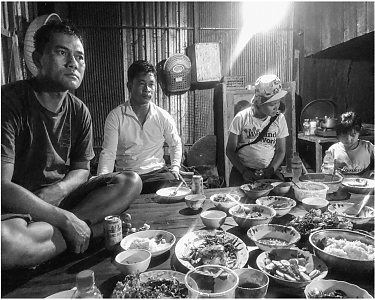
Cambodian Seafarers Talk About Pirates
Mike visits Cambodia for The New Yorker to talk about a harrowing shared experience in Somalia
The Muslim Burial
Cambodian hostages remember digging a grave for one of their own. A sequel chapter to The Desert and the Sea
The Real Pirates of the Caribbean
Adventure journalism in Southern California. A travel essay for The Paris Review.
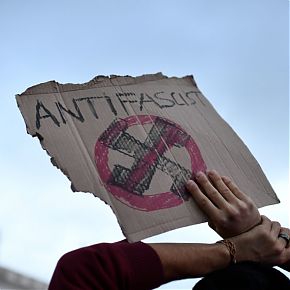
Antifa Dust
An essay on anti-fascism in Europe and the U.S., for the Los Angeles Review of Books
Was Hitler a Man of the Left?
A book that helped Republicans in America lose their damn minds.
Ghosts of Dresden
The Allied firebombing of Dresden in 1945 destroyed the baroque center of what Pfc. Kurt Vonnegut called, in a letter home from Germany, “possibly the world’s most beautiful city.”
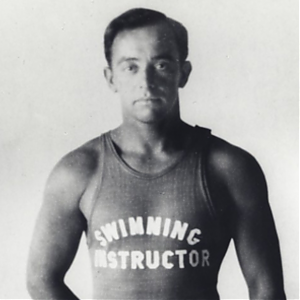
George Freeth, Biographed
The first academic treatment of America’s surf pioneer. Also, was Freeth gay?
It’s Called Soccer
Americans live on what amounts to an enormous island, defended on two shores by the sea, and we’ve evolved a few marsupial traditions that nobody else understands.
Tilting at Turbines (in the Severn River)
The morning was clear and cold, with frost on the church steeple and the cemetery grass. I had a quick English breakfast at a white-cloth table, in my wetsuit, and drove to Newnham, a village on the Severn River in Gloucestershire, parking near the White Hart Inn.

The Curse of El Rojo
I’d packed the car lightly — a bag of clothes, a bag of cassette tapes, a backpack of books, a few essential tools.









